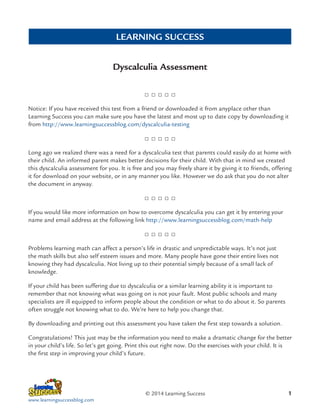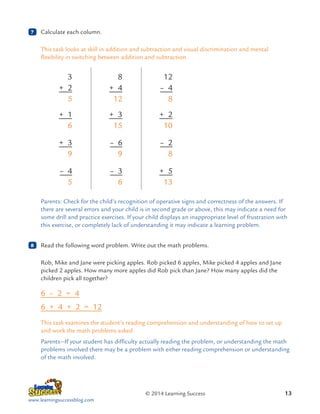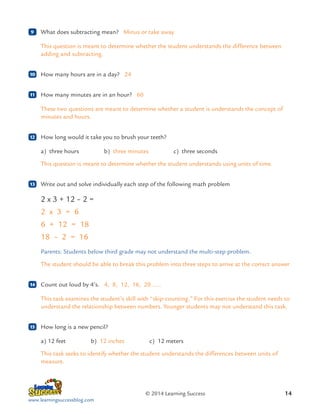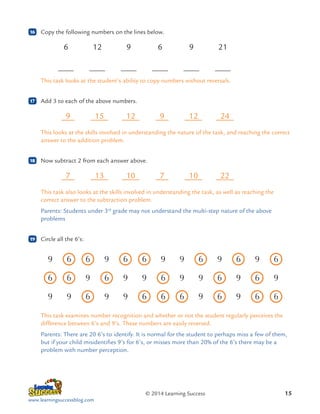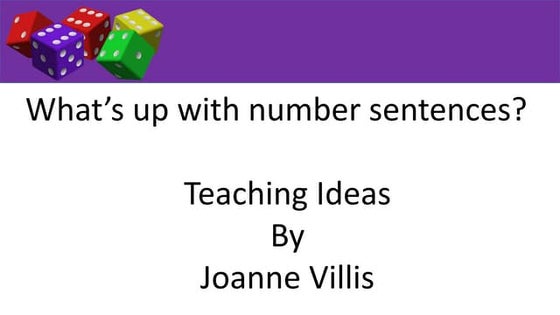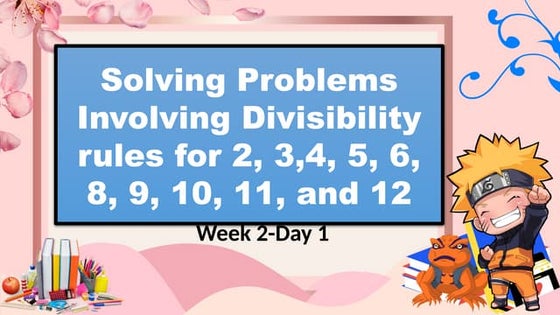Dyscalculia test
- 1. LEARNING SUCCESS Dyscalculia Assessment Notice: If you have received this test from a friend or downloaded it from anyplace other than Learning Success you can make sure you have the latest and most up to date copy by downloading it from http://www.learningsuccessblog.com/dyscalculia-testing Long ago we realized there was a need for a dyscalculia test that parents could easily do at home with their child. An informed parent makes better decisions for their child. With that in mind we created this dyscalculia assessment for you. It is free and you may freely share it by giving it to friends, offering it for download on your website, or in any manner you like. However we do ask that you do not alter the document in anyway. If you would like more information on how to overcome dyscalculia you can get it by entering your name and email address at the following link http://www.learningsuccessblog.com/math-help Problems learning math can affect a person’s life in drastic and unpredictable ways. It’s not just the math skills but also self esteem issues and more. Many people have gone their entire lives not knowing they had dyscalculia. Not living up to their potential simply because of a small lack of knowledge. If your child has been suffering due to dyscalculia or a similar learning ability it is important to remember that not knowing what was going on is not your fault. Most public schools and many specialists are ill equipped to inform people about the condition or what to do about it. So parents often struggle not knowing what to do. We’re here to help you change that. By downloading and printing out this assessment you have taken the first step towards a solution. Congratulations! This just may be the information you need to make a dramatic change for the better in your child’s life. So let’s get going. Print this out right now. Do the exercises with your child. It is the first step in improving your child’s future. © 2014 Learning Success www.learningsuccessblog.com 1
- 2. DYSCALCULIA TEST This test is designed as a brief survey to identify the possibility of the presence of the learning disability Dyscalculia, a problem that can interfere with a student’s ability to understand and use math and spatial reasoning. Because this quiz is general and designed to be used throughout the elementary grades, younger students may not understand all of the questions. This is normal and not a big source of concern. 1 Fill in the missing numbers: 1, 2, , 4, 5, 6, , 8, 9, 10, 3, 6, 9, , 15, 18, , 24, 27 1, 5, ____, 13, _____, 21, 25, 29, 50, 45, , 35, 30, 25, , 15, 2 ,5 Match: Circle the number that matches the number in the first column 6 8 6 5 8 3 5 9 8 9 6 9 0 3 3 3 9 5 8 3 2 Count backward from 20 and then forward to 50. © 2014 Learning Success www.learningsuccessblog.com 2
- 3. 4 Match: Circle the number in the second column that matches the number in the first column: 5 Draw the next two rows in the pattern: © 2014 Learning Success www.learningsuccessblog.com 3
- 4. 6 Copy the following problems to the right making sure the columns are lined up. 306 2 + 19 12 4321 + 600 415 92 6321 + 20 123987 35520 2352782 569 4789346 + 12 © 2014 Learning Success www.learningsuccessblog.com 4
- 5. 7 Calculate each column. 3 + 2 + 3 + 2 + 3 – 6 – 2 – 4 12 – 4 + 1 8 8 + 4 – 3 + 5 Read the following word problem. Write out the math problems. Rob, Mike and Jane were picking apples. Rob picked 6 apples, Mike picked 4 apples and Jane picked 2 apples. How many more apples did Rob pick than Jane? How many apples did the children pick all together? 9 What does subtracting mean? © 2014 Learning Success www.learningsuccessblog.com 5
- 6. 10 How many hours are in a day? 11 How many minutes are in an hour? 12 How long would it take you to brush your teeth? a) three hours b) three minutes c) three seconds 13 Write out and solve individually each step of the following math problem 2 x 3 + 12 – 2 = 14 Count out loud by 4’s. 15 How long is a new pencil? a) feet b) inches c) meters 12 12 12 © 2014 Learning Success www.learningsuccessblog.com 6
- 7. 16 Copy the following numbers on the lines below. 6 12 9 6 9 21 17 Now subtract 2 from each answer above. 19 Add 3 to each of the above numbers. 18 Circle all the 6’s: 9 6 6 9 6 6 9 9 6 9 6 9 6 6 6 9 6 9 9 6 9 9 6 9 6 9 9 9 6 9 9 6 6 6 9 6 9 6 6 © 2014 Learning Success www.learningsuccessblog.com 7
- 8. 20 Look at the following number sequence. Cover it up and then write it on the line. 3 8 4 5 2 6 9 7 4 8 3 1 6 7 8 3 4 5 21 Repeat the following number sequences back to me: 8 5 2 9 7 4 1 6 3 8 2 8 9 7 4 5 6 2 22 Look at the shape. Cover it up and copy it on the line. © 2014 Learning Success www.learningsuccessblog.com 8
- 9. 23 Fill in the missing numbers or symbols: 7 + 2 = – 4 = + 3 = 9 + 4 + 5 24 + 6 = = 11 + = 7 + 3 = 3 = 8 = 16 – 6 = 2 = 6 5 = 11 Use the symbols to perform the math problems. = +3 = –1 6 = 4 = 3 = = 7 = 8 5 = +2 = © 2014 Learning Success www.learningsuccessblog.com 9
- 10. ANSWERS AND EXPLANATIONS This test is designed as a brief survey to identify the possibility of the presence of the learning disability Dyscalculia, a problem that can interfere with a student’s ability to understand and use math and spatial reasoning. Because this quiz is general and designed to be used throughout the elementary grades, younger students may not understand all of the questions. This is normal and not a big source of concern. 1 Fill in the missing numbers: 1, 2, 3, 4, 5, 6, 7, 8, 9, 10, 11 3, 6, 9, 12, 15, 18, 21, 24, 27 1, 5, 9, 13, 17, 21, 25, 29, 33 50, 45, 40, 35, 30, 25, 20, 15, 10, 5 The point of this test is to check for knowledge of number sequencing and recognizing the “skip-counting” sequence and then being able to fill in the missing numbers, both forward and backward. Younger students may not understand all of these problems. 2 Match: Circle the number that matches the number in the first column 6 9 8 6 5 8 3 5 9 8 9 6 9 0 3 3 5 8 3 2 This task tests for number recognition. Some of these numbers are easily reversed in children that have problems with figure recognition. 3 Count backward from 20 and then forward to 50. This task checks for memory of number sequences. Younger students should be able to count forward with little trouble, but counting backwards may cause some difficulty. Younger students may occasionally miss a number, especially when counting backwards—Chiefly, if the student understands the task and isn’t getting the numbers out of sequence there probably isn’t a major problem. © 2014 Learning Success www.learningsuccessblog.com 10
- 11. 4 Match: Circle the number in the second column that matches the number in the first column: This task tests for matching skills and checks for a problem with number reversals. We are also looking for possible vision discrepancies with the differences between different types of numbering; solid black, silhouette and colored/artistic figures. If there are significant differences noted, further screening may be in order. 5 Draw the next two rows in the pattern: This task looks at pattern recognition and fine motor coordination in continuing the existing pattern. © 2014 Learning Success www.learningsuccessblog.com 11
- 12. 6 Copy the following problems to the right making sure the columns are lined up. This task looks at ability to copy problems without number reversals or transpositions. 306 2 + 19 12 4321 + 600 415 92 6321 + 20 123987 35520 2352782 569 4789346 + 12 Parents—check for number reversals and transpositions. If your child is beyond 1st grade and has several of these mistakes there may be a problem. © 2014 Learning Success www.learningsuccessblog.com 12
- 13. 7 Calculate each column. This task looks at skill in addition and subtraction and visual discrimination and mental flexibility in switching between addition and subtraction. 3 + 2 5 8 + 4 12 12 – 4 8 + 1 6 + 3 15 + 2 10 + 3 9 – 6 9 – 2 8 – 4 5 – 3 6 + 5 13 Parents: Check for the child’s recognition of operative signs and correctness of the answers. If there are several errors and your child is in second grade or above, this may indicate a need for some drill and practice exercises. If your child displays an inappropriate level of frustration with this exercise, or completely lack of understanding it may indicate a learning problem. 8 Read the following word problem. Write out the math problems. Rob, Mike and Jane were picking apples. Rob picked 6 apples, Mike picked 4 apples and Jane picked 2 apples. How many more apples did Rob pick than Jane? How many apples did the children pick all together? 6 – 2 = 4 6 + 4 + 2 = 12 This task examines the student’s reading comprehension and understanding of how to set up and work the math problems asked. Parents—If your student has difficulty actually reading the problem, or understanding the math problems involved there may be a problem with either reading comprehension or understanding of the math involved. © 2014 Learning Success www.learningsuccessblog.com 13
- 14. 9 What does subtracting mean? Minus or take away This question is meant to determine whether the student understands the difference between adding and subtracting. 10 How many hours are in a day? 24 11 How many minutes are in an hour? 60 These two questions are meant to determine whether a student is understands the concept of minutes and hours. 12 How long would it take you to brush your teeth? a) three hours b) three minutes c) three seconds This question is meant to determine whether the student understands using units of time. 13 Write out and solve individually each step of the following math problem 2 x 3 + 12 – 2 = 2 x 3 = 6 6 + 12 = 18 18 – 2 = 16 Parents: Students below third grade may not understand the multi-step problem. The student should be able to break this problem into three steps to arrive at the correct answer 14 Count out loud by 4’s. 4, 8, 12, 16, 20 ….. This task examines the student’s skill with “skip-counting.” For this exercise the student needs to understand the relationship between numbers. Younger students may not understand this task. 15 How long is a new pencil? a) 12 feet b) inches c) meters 12 12 This task seeks to identify whether the student understands the differences between units of measure. © 2014 Learning Success www.learningsuccessblog.com 14
- 15. 16 Copy the following numbers on the lines below. 6 12 9 6 9 21 This task looks at the student’s ability to copy numbers without reversals. 17 Add 3 to each of the above numbers. 9 15 12 9 12 24 This looks at the skills involved in understanding the nature of the task, and reaching the correct answer to the addition problem. 18 Now subtract 2 from each answer above. 7 13 10 7 10 22 This task also looks at the skills involved in understanding the task, as well as reaching the correct answer to the subtraction problem. Parents: Students under 3rd grade may not understand the multi-step nature of the above problems 19 Circle all the 6’s: 9 6 6 9 6 6 9 9 6 9 6 9 6 6 6 9 6 9 9 6 9 9 6 9 6 9 9 9 6 9 9 6 6 6 9 6 9 6 6 This task examines number recognition and whether or not the student regularly perceives the difference between 6’s and 9’s. These numbers are easily reversed. Parents: There are 20 6’s to identify. It is normal for the student to perhaps miss a few of them, but if your child misidentifies 9’s for 6’s, or misses more than 20% of the 6’s there may be a problem with number perception. © 2014 Learning Success www.learningsuccessblog.com 15
- 16. 20 Look at the following number sequence. Cover it up and then write it on the line. 3 8 4 5 2 6 9 7 4 8 3 1 6 7 8 3 4 5 This task looks at the student’s capacity for remembering a short sequence of numbers and then reproducing them with out reversals or transpositions. Younger students may not be able to remember more than 3 or 4 numbers at a time. Parents: A 3rd grader or above should be able to remember and write all of the sequences. Below 3rd grade, make allowances for shorter memory sequences. 21 Repeat the following number sequences back to me: 8 5 2 9 7 4 1 6 3 8 2 8 9 7 4 5 6 2 This task examines the student’s ability to remember and orally repeat the number sequences with reversals or transpositions. Younger students may not be able to remember more than the 3 or 4 number sequences. 22 Look at the shape. Cover it up and copy it on the line. This task looks at the student’s ability to remember a picture and then reproduce it without reversals. © 2014 Learning Success www.learningsuccessblog.com 16
- 17. 23 Fill in the missing numbers or symbols: 7 + 2 = 9 – 4 = 5 + 6 = 11 6 + 3 = 9 + 2 = 11 + 5 = 16 4 + 3 = 7 + 3 = 10 – 6 = 4 5 + 3 = 8 – 2 = 6 + 5 = 11 This task looks for the student’s capacity for to identify the operations involved and perform the math and fill in the blanks with the proper number or operation sign. 24 Use the symbols to perform the math problems. = +3 = –1 6 = 5 4 = 6 3 = 2 = 11 7 = 9 8 5 = +2 = 8 This task is meant to examine the student’s understanding of replacing numbers with symbols and then of performing the appropriate actions. Younger students may not understand this task. Parents: When scoring this test it is important to look for trends or consistent types of mistakes from your student. If you notice a definite trend in reversals, transpositions, or lack of comprehension of multi-step problems, inability to accurately reproduce pictures or follow instructions or problems with memorizing and reproducing number sequences there may be a dyscalculia problem that can be managed with specific exercises and practice. © 2014 Learning Success www.learningsuccessblog.com 17
- 18. What Next? You may have noticed that some of the exercises were extremely easy for your child. Others may have been very difficult. If you had tried to predict which was which before the test you probably wouldn’t have gotten it right. That’s normal. Not even an expert could predict it. That’s because dyscalculia is a blanket term. It simply means that there are smaller components of learning that are weak. The combination of weak components add up to poor math skills (pun intended). But no two dyscalculics are alike. That’s why you start with this test. This starts to help you understand which fundamental learning skills need work. As you do our complete course you will continue to build a better understanding of where the core problems are. And you’ll be able to fix them. Start by entering your name and email address on this page http://www.learningsuccessblog.com/math-help and we will send you a video that explains some of the exercises you can do. We’ll help you with the next steps to take. We’ll see you in that video. Together we’ll get started on the solution. And remember since dyscalculia affects so many things in a person’s life, fixing it makes major positive changes. You’ll see changes not only in math skills. You’ll quite possibly see behaviour changes, changes in your home life, and more. Most parents tell us what a relief it is to finally know they are helping their child achieve learning success. We think you will too. We’ll see you in the video. http://www.learningsuccessblog.com/math-help © 2014 Learning Success www.learningsuccessblog.com Liz Weaver 18
